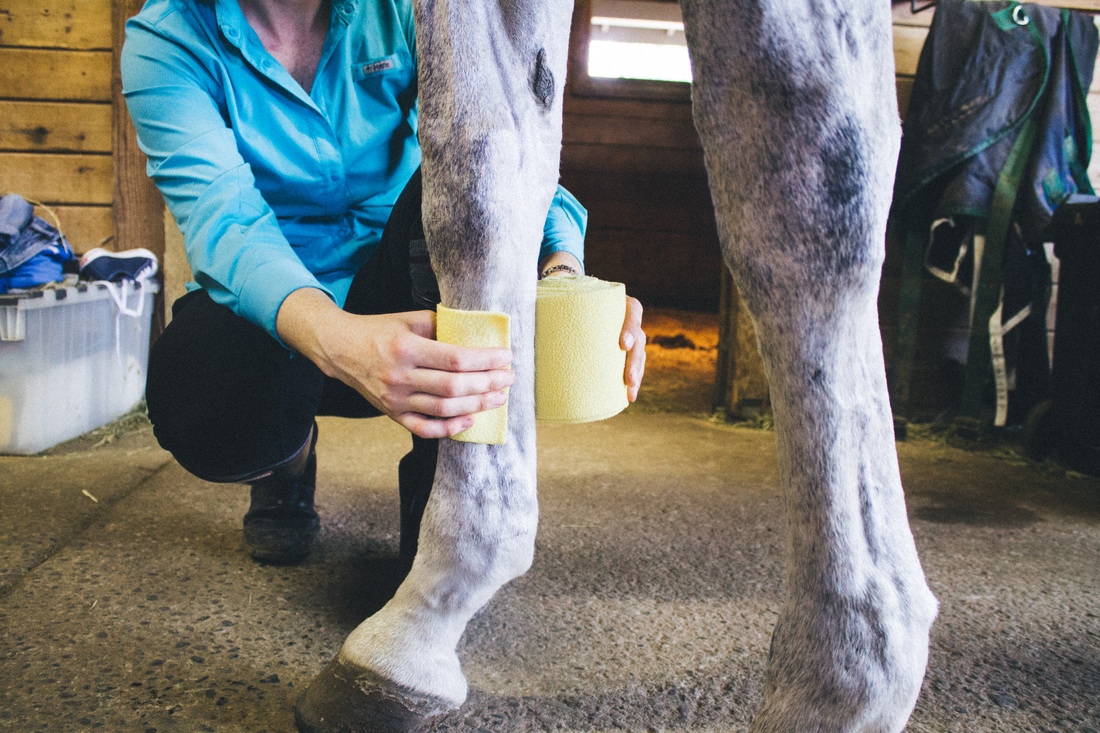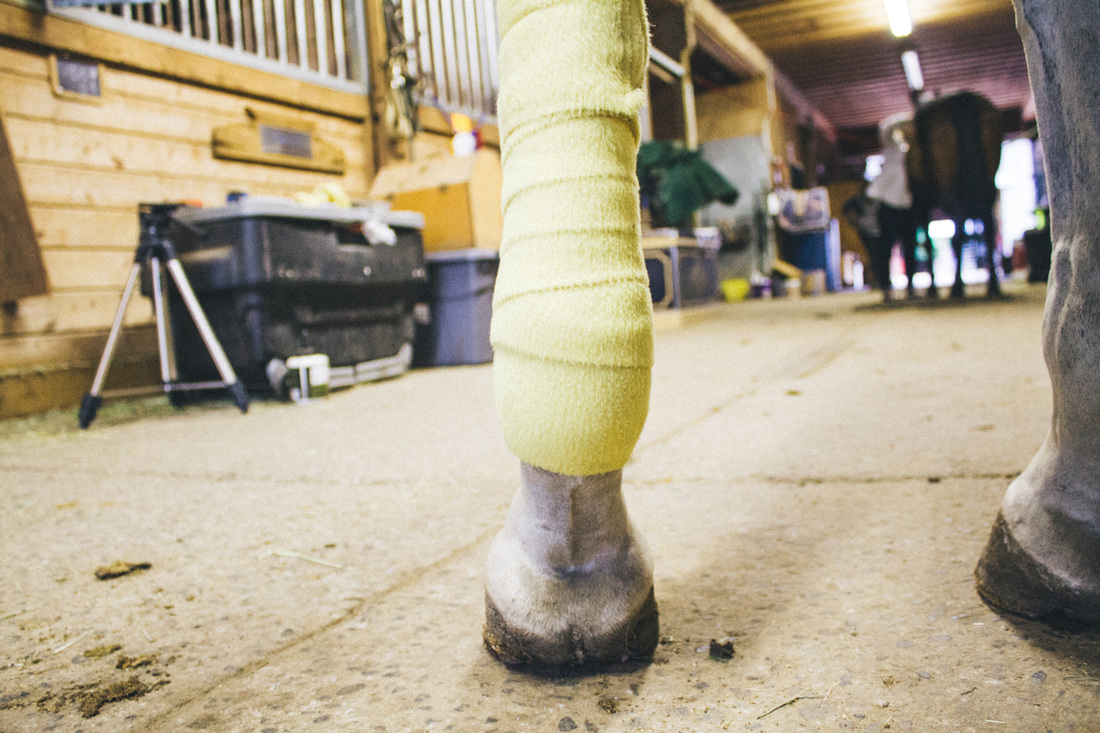|
First things first, watch the video about how to roll wraps then come back here to learn how to use them. Alrighty, now that we have a safe wrap to use start with either of the ways listed below, either the H/J way or the Polo way. In this video the H/J way is demonstrated. To properly wrap and avoid injury you must ALWAYS wrap from the inside, around the front, and the towards the back. If you wrap the other way you will put a lot of strain on the tendons and ligaments on the back of the leg and can injure the horse. A bowed tendon is no fun and means time off for your horse, so be careful! Think of it this way, you are drawing a heart around their legs with the direction you wrap. The image below might explain this better. Once you have started your wrap correctly, maintain even tension throughout the entire wrap. If wrap tighter in one area and looser in another, this could cause slipping of the wrap and injury. Wrap all the way down the leg, from the base of the knee to the fetlock (ankle), when you reach the fetlock wrap around the base of the joint. This should create a criss-cross in the front and center of the leg. Then work your way back up the leg and finish at the base of the knee. Make sure the velcro is secure at the top to prevent the wrap from coming off. Ideally, your wrap will have even spacing all the way down and back up. If you start working your way back up and run out of wrap do not just dramatically increase the spacing or secure the velcro in the middle of the leg. These are both great ways to cause injury, so unfortunately you should remove the wrap, re-roll it, and start over. Why do we use Polo Wraps? For support. Think of polo wraps as an ankle brace or knee brace you might wear when exercising or playing a sport. The wrap provides support to a sensitive area of the horse helping to prevent injury. A polo wrap is the most supportive leg protection for the tendons and ligaments. Boots can also be used for protection, but often they don't offer as much support. However, hard sided boots are better protection from the back legs accidentally kicking the front legs. Always, talk to your trainer about what boots are the best for your horse. Each horse has different needs and trainers have their own preferences. Any questions? Feel free to leave it in the comments and I will be sure to answer them for you!
0 Comments
Leave a Reply. |
Categories
All
SponsorsInterested in sponsoring The Barn Rat? Be sure to contact us here!
|









